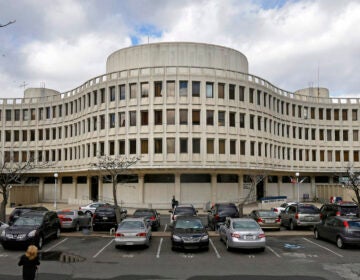Cave a vestige of the ‘Hermits of the Wissahickon’
Every morning along the Wissahickon Creek, joggers, hikers and cyclists taking the winding trails of Fairmount Park pass unknowingly by one of Philadelphia’s most intriguing historical landmarks, The Cave of Kelpius.
The cave and the figure after whom its named, Johannes Kelpius, are reminders of the founding principle of this city and state. And the explanation of how Hermit Lane got its name.
Johannes Kelpius was a German Pietist, mystic, musician, and writer, interested in botany and astronomy, who came to believe that the end of the world would occur in 1694. This date he based upon a complex interpretation of The Book of Revelation.
Kelpius felt that the seventeenth-century Province of Pennsylvania would be a good place to await the end, given its reputation for religious toleration at the edge of a barely settled wilderness.
Philadelphia had just been founded in 1682, and had quickly become a tolerant haven and refuge for many pietist, communitarian, or free-thinking groups who were not well-accepted in the Old World.
Upon arrival, he and his followers lived in seclusion, thinking, living simply, and assisting Philadelphians whenever there was a need. The mystics became known as “the Hermits of the Wissahickon.” The poet John Greenleaf Whittier later called Kelpius the “maddest of good men.” His followers referred to themselves as the “Society of the Woman in the Wilderness,” yet were all men.
When no sign or revelation accompanied 1694, the faithful continued to live in celibacy by the Wissahickon, searching the stars and hoping for the end. Kelpius died in 1708 and the group disbanded some time thereafter.
The Pennsylvania Historical and Museum Commission placed a marker in the park, detailing this history, but the marker offers no specifics as to where the men practiced their beliefs. This makes the Cave of Kelpius one of Philadelphia’s harder-to-find historical landmarks.
The cave, situated between the Wissahickon Creek area of Fairmount Park and Hermit Lane, is not actually a cave at all. Rather, it’s an old springhouse used by the hermits to meditate and await the second coming. It is roughly the size of a small shed and made of gray, rough-hewn rock and mortar. Its only entrance is narrow and angled downward into the hill, keeping the inside dark and dry.
The floor is dirt, with a few rocks scattered about, and the walls and ceiling join in an arch high enough to allow a modern-day adult male to stand straight up with some room to spare.
Among the winding trails for biking and cycling, the odd, man-made structure looks out of place, but not as much as the large monolith standing next to it.
In 1961 (or, A.D. 1961, to be as precise as the monument), the Rosicrucian Brotherhood set up an inscribed monument just outside the cave to honor the man they called “The Original Rosicrucian,” Johannes Kelpius. The Rosicrucians (the name means “rose and cross”) are a worldwide secret society of sorts that claims to have wisdom dating to ancient Egypt. The group describes itself as a philosophy and fraternity but not a religion. Rosicrucians share with Kelpius a connection to 17th-century Germany.
Although letters indicate Kelpius’ Society built a 40-foot-by-40-foot residence near the Wissahickon, not much besides the springhouse remains of its time here. They are, however, credited with naming the area “Roxborough”; Kelpius used the name “Rocks-burrow” in a letter dated May 25, 1706.
Most visitors to the Cave haven’t gone looking for it, but are wayward hikers or cyclists who stumble upon the landmark.
Take, for instance, the solitary hiker, Leah Romero, who happened by the Cave on one recent fall day.
“I’ve been walking the trails along the creek for some time, since moving here for school a few years back,” she said while peeking inside the cave. “This is the first time I’ve seen this… I just happened to take a different path this morning and look what happened.”
WHYY is your source for fact-based, in-depth journalism and information. As a nonprofit organization, we rely on financial support from readers like you. Please give today.




